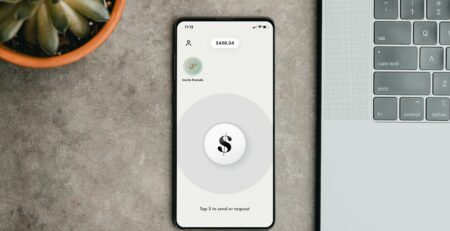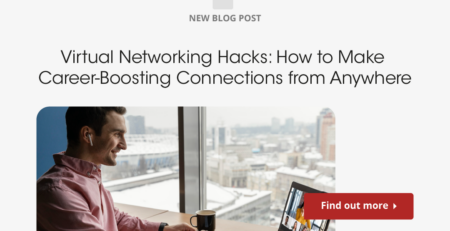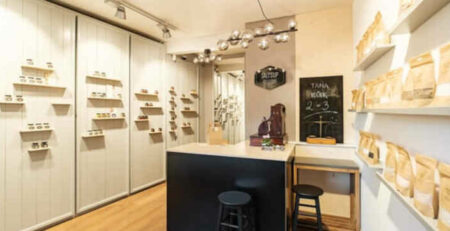How Remote Work is Changing the Ways Companies Hire
More and more frequently, companies are including partial or full-time working from home positions into their employment structures. This is in large part due to the development of new technology and the growing abundance of faster internet connections that enable people to reliably get work done outside of a traditional office. Less frequently discussed is the way work has changed for a significant percent of the population in the last two or three decades.
Offices themselves have always been changing, going from simple single-desk rooms to sprawling floors, trading typewriters for computers, and ditching the formerly innovative cubicle for open floorplans. So, too, have national and international market trends, innovations, and offshoring had a huge impact on the character of the work that many people do.
Spurred on by the unforeseen events of 2020 as well as the desire of many workers to skip the commute, working from home schemes look like they’re not going anywhere anytime soon. But how has this relatively new strategy changed hiring practices?
In very general terms, there are two attitudes businesses have toward remote working from home positions. On the one hand, there are what you might call traditionalists, who try to make the process to hire remote employees as close to a traditional interview process as possible. On the opposite hand are the more flexible and creative companies that have built a procedure to hire remote employees that allows them to find candidates possessing important remote working qualities like self-motivation and the ability to prioritize.
Many businesses have found that they may not need brick and mortar offices anymore. Cutting out the rent and utilities for these buildings can save tons of money. Plus, affording workers remote working days is one of the best retention strategies.
The main concern companies have is getting productive remote work out of their employees. Many studies, like this one from the Harvard Business Review, have demonstrated that productivity levels increase when employees are working from home, but many companies are still hesitant.
Understanding how businesses are navigating this new pivot to remote working from home positions can help creatives get an idea of what skills currently have the most value to employers. It should also give everyone else an accurate picture of what exactly the working world looks like in light of recent events.
What is Traditional Hiring?
Before we get into what’s very likely to be the new normal for some time to come, let’s get a general idea of what hiring looks like the old-fashioned way. It always varies from company to company and creative staffing agencies like icreatives have our way of vetting talent, but there are a few critical stages of the hiring process we should all be familiar with before discussing how remote hiring has changed things.
- Creating A Role
Perhaps it may appear like the first stage of the hiring process is the application, but businesses have to sink a lot of time and energy into identifying talent gaps and creating a role long before they field applications from potential candidates.
- Advertising & Fielding Applications
Once the role has been defined, a company has to find a way to broadcast the vacancy so people will apply for it. If they use a creative staffing agency, this part of the process is much faster and easier. For example, icreatives already has a huge talent pool from our many years of experience from which we can field applications.
- Combing Through the Applications
Who makes it to the interview? It can take a surprisingly long time to figure out. No matter how good the job positing might be, there will always be applicants who are either completely unqualified or extremely overqualified. Everyone in the middle will have skills and experience that’s so close to one another it can be hard to choose who can be eliminated at this stage.

- Interviews – 1st Round
Dreaded by many and a cakewalk for a very select few, interviews can finally begin after the close of the application period and an application review process. Even before working from home changed how interviews happen, there was a wide variety of techniques used. Hypotheticals and brainteasers once favored by big tech companies like Google and Microsoft thankfully died out long ago, but interviews are still fairly open-ended.
- Review and Callbacks
After the first round of interviews, the decision-makers, hiring manager, or committee in charge of hiring reviews responses from candidates in the interviews and impressions left on others at the company. When the best of the best have been culled from the herd, it’s time to call them back in and grill them all over again.
- Review and Selection
Some companies add in a third round of interviews before making a final selection. Others add in tests particular to the field like design tests or unpaid work. Those haven’t completely disappeared from the list of tactics used to hire remote employees these days.
This is far from an exhaustive list of the hiring practices at creative companies. The process could be much longer or much shorter depending on the role and how nitpicky the company is. But for a simple idea of what hiring looked like before the remote working from home boom, these descriptions should do.
How Do Creative Staffing Agencies Find Talent?
Finding the best creative talent requires a constant ear to the grindstone, so to speak. Trends in the industry and hiring numbers are just two of the things any good creative staffing agency should stay up to date on. That’s why icreatives pairs with local organizations all over the country and maintains contact with creatives we’ve met in the past to create a highly talented pool of creative ability.
At icreatives, we’ve been around long enough to have seen the first spikes in remote hiring. We’ve had plenty of experience creating a hiring process that will save companies time and money. Rather than leaving this whole complicated process up to a business, icreatives offers them the opportunity to simplify. We use our existing talent pool to find applicants and vet them.
We ask for portfolios and case studies and then we communicate with the hiring company to let them know what we’ve found. Using our shortlist, they can bring in candidates for a round of interviews or get to know them another way. In any case, creative staffing agencies greatly reduce the complexity and cost of hiring.
What’s So Different About Remote Work?
Working from home creates many other differences besides the lack of physical proximity to coworkers. There’s frequently a learning curve for new video conferencing apps or workflow software. Many UX designers do plenty of productive remote work but have to comply with an increased focus on deliverables like site information maps, wireframes, and personas.
From the employer’s perspective, the biggest difference caused by employees working from home is a perceived lack of control. For this reason, companies have started including more questions about self-motivation, judicious decision-making, and experience working on a deadline.
How Working From Home Changed Hiring
There’s every chance that the next time you apply for a remote job, the person conducting your interview will be doing so from a remote position themselves. All the decisions about potential candidates and new hires are now far more likely to be made on a conference call or a Zoom meeting.
To accommodate the new distance between coworkers, clients, business partners, and management, everything in the workplace has changed. That has spread to the hiring process as well. For one thing, the handshake has become a symbol of a bygone era at least for now. However, as much as systems had to be changed, there were also some good results.
Many businesses found that they have much more imagination than expected when they had to move all or most of their employees to working from home positions. Remote interviews are now much more common and that means a wider variety of people are applying to jobs they wouldn’t have otherwise. The introduction of new personalities and, on occasion, discovering that their new coworker lives across the country has made collaboration even more important than it already was.
7 Strategies Companies Use to Hire Remote Employees
Many businesses use creative staffing agencies like icreatives to find their full-time or part-time remote workers. Whether they have simplified the process by using a creative staffing agency or not, there are a few tactics they use to find remote workers best-suited to their open position.
1- Boost the Employer Brand Online
Companies have had hiring reputations since their inception, but the internet provides many more opportunities for current and former employees to speak their minds about the good and bad aspects of working at a given business.
Savvy employers have realized this and are trying out new ways to amplify positive accounts from people who have worked for them. With so many people now working from home, there is no longer a walking tour of an office building to give them a good impression. Reviews on the internet are often the only resource applicants have to learn about working at a company.
If you’re applying for a remote position, remember that this principle is a two-way street. Employers are also increasingly turning to social media and other internet sites to find out background information on prospective employees.
2- Apps Are Taking Over
Software and applications are designed to assess things like “culture fit” to determine how well they would fit with an existing team. This predates the rush to remote working from home positions, but it’s the case nonetheless.
You will very likely not see the results of these programs. They are done with information gleaned from your portfolio, interviews, and other resources from the application process. There’s no way to game the system with these programs, but make sure your application materials clearly and strongly present who you are as a creative so that these apps can have an accurate read.
3- Online Applications
Job websites have been around since the mid-90s but businesses are now using digital applications as never before. If prospective employees aren’t local, there’s not any other way. Smaller operations might accept job applications by email, but most companies are using online application systems that give them more control over the hiring process.
Of course, if you apply to work with icreatives, it will save you having to fill out the same application on dozens of company websites and job boards. You only need to apply to icreatives once.
4- Pre-Recorded Videos
To help in the pre-interview process, some companies have begun requiring applicants to record short videos in which they answer a few or several questions. This helps cull the herd before calling people in (or on Skype) for interviews. It might sound frightfully awkward, and if you’ve never done it before you’re likely to go through several practice rounds, but the pre-recorded video can be a great tool for applicants as well. Inject it with enough personality and display your professional skill and thoughtfulness and you might be able to pull ahead of the pack early on.
5- Case Studies vs. Unpaid Work
Let’s not beat around the bush – working for free doesn’t sound very appealing. But just like the pre-recorded video, it can be a great way to showcase your skills. Some companies (and creative staffing agencies) will ask for case studies where applicable rather than asking designers to work out a hypothetical situation.
These terms apply for designers but some other creative positions have their equivalents. Content writers, for example, are generally required to submit samples, published work, and portfolios. Video editors are similarly asked for demo reels rather than asked to create brand new projects from scratch.
6- Virtual Tours
To the extent that they still have a physical office somewhere, many companies are using virtual tours to give candidates an idea of what headquarters looks like. This is not the most common tool, but if there’s any possibility that you’ll be driving or flying in to the office then expect to have a quick virtual walkthrough at some point. This might be a rare opportunity to make some small talk with people who work for the company.
7- Training & Onboarding
Onboarding is a bit more complicated with many remote working from home jobs. Since companies want productive remote work but need to train new talent to get it, longer training periods might be part of your new remote job. Learning the software and how the company wants business to be conducted is probably going to take several video tutorials, meetings, and phone calls with a coworker since they won’t be able to sit next to you and guide you through the process.

Using Creative Staffing Agencies to Hire Remote Employees
Just as we can help cut costs and speed up the traditional hiring processes, creative staffing agencies like icreatives can use our extensive referral network and talent pool to fill positions. For creatives, finding work with some of the biggest brands is streamlined when you apply with icreatives.
Companies’ focus is on productive remote work and here at icreatives, we know how to vet our talent to make sure we find creatives who can supply top-notch work. If you’re in a creative field or a company that needs to staff an art department and are unsure about how to navigate the new world of remote work, we’d be happy to help.
Conclusion:
Many companies have had a hard time trying to adapt their hiring practices to remote work. For the most part, many have had success putting new apps and software to use conducting video and phone interviews, giving virtual tours, and advertizing job openings to field resumes.
Flexibility in work structures is one of the most preferable perks for many creatives. Companies are now more likely than ever before to offer this new structure as long as you can reliably perform productive remote work. The focus should still be on presenting a cohesive portfolio with case studies and work samples, but businesses are also looking for self-motivated creatives in higher numbers.
While there is much that has changed about the methods businesses are hiring workers, it’s very much still the case that using a creative staffing agency is the cheapest and fastest way to find work as a creative and fill a creative role within the company.












